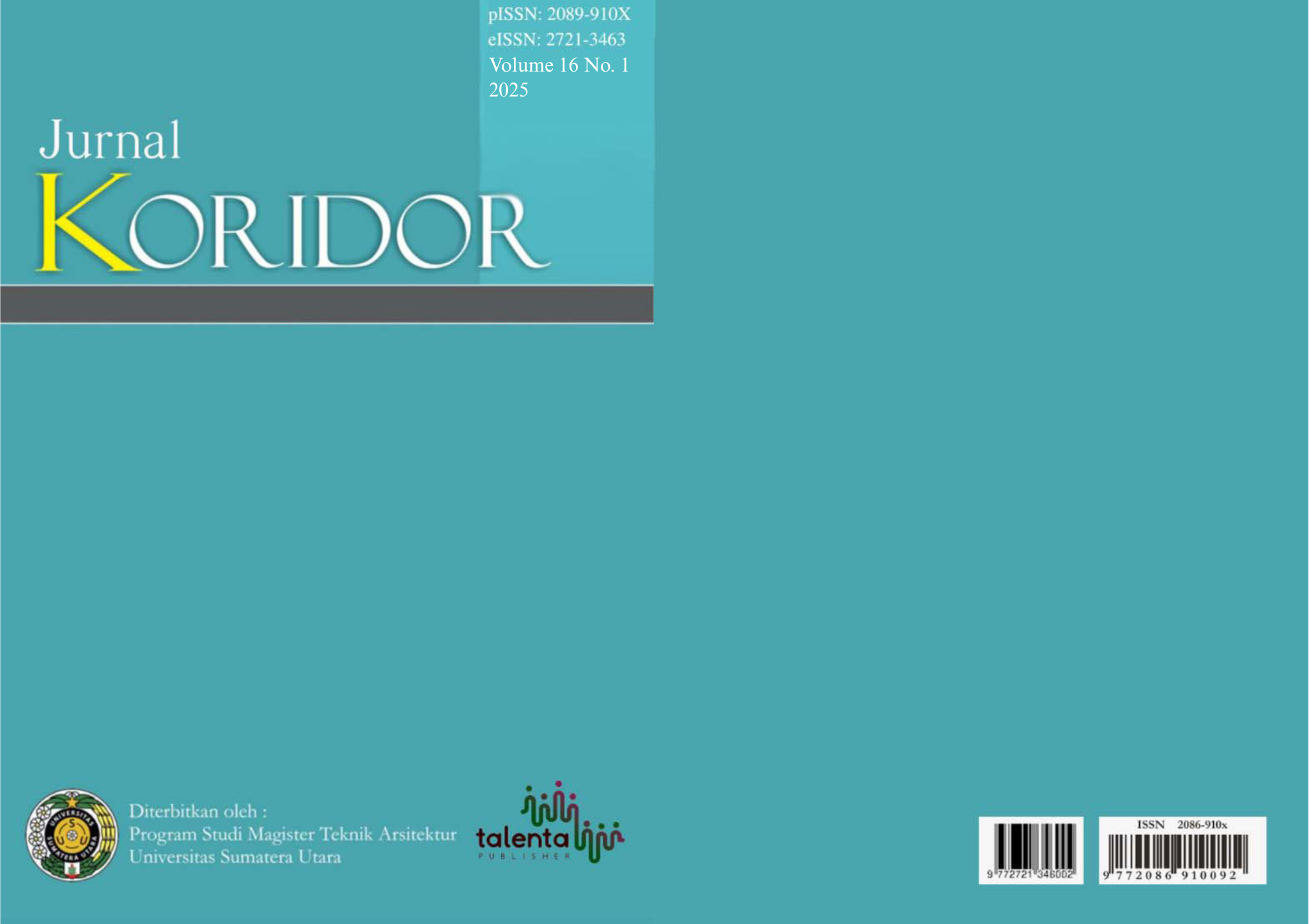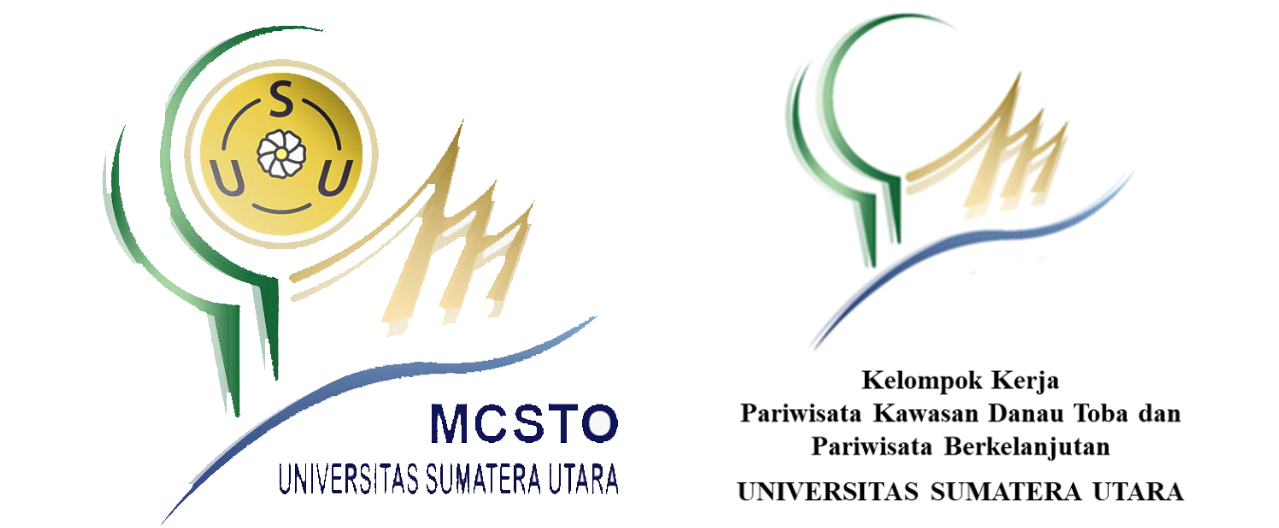The Landscape of Contemporary Architectural Practices in Indonesia
DOI:
https://doi.org/10.32734/koridor.v16i1.20251Keywords:
Architectural trends, Contemporary architecture, Indonesia, Regional disparitiesAbstract
Indonesia's contemporary architecture has developed in response to globalisation, urbanisation, and modernisation, striking a balance between regional customs and global tendencies. This research analyses projects displayed at the Indonesian Architects Week (IAW) 2024 exhibition in order to investigate the state of contemporary architecture in Indonesia. Key architectural trends in residential, office, hospitality, commercial, government, and public areas are highlighted by the research, which groups these projects according to their function and geographic distribution. The results show that private-sector demands drive contemporary architectural practices, with Java and Bali & Nusa Tenggara having the highest concentration of projects, while Sumatra, Sulawesi, Kalimantan, and Papua & Maluku continue to be under-represented. A trend towards mixed-use architectural designs is also noted in the report, as demonstrated by buildings that combine several uses, including office-commercial, government-public, and residential-office hybrids. Despite these revelations, the study's limitations include its only dependence on exhibition data and the absence of primary research methods like stakeholder participation, field observations, or interviews. It does not, therefore, offer a completely generalisable depiction of modern architectural techniques in Indonesia. However, it provides a useful foundation for further research into the innovations, problems, and trends influencing Indonesia's built environment. To gain a more thorough grasp of how Indonesian contemporary architecture is still changing within regional, cultural, and economic contexts, future research should apply direct architectural analysis and larger datasets.
Downloads
References
Friedman, A. (2021). Challenges and Opportunities of Contemporary Architecture. Architecture, 1(1), 3–4. https://doi.org/10.3390/architecture1010002
Soriano, F., & Palacios Díaz, M. D. (2023). Simultaneous Double Notions: Mannerist Elements in Contemporary Architecture. Architectural Theory Review, 27(3), 326–345. https://doi.org/10.1080/13264826.2023.2277202
Holzer, D. (2023). Design Technology in Contemporary Architectural Practice (1st ed.). Routledge. https://doi.org/10.4324/9780429460722
Al-Hammadi, N. A. Q., & Grchev, K. (2023). Aspects of contextual architecture regarding traditional/contemporary architecture, physical/cultural and place identity: A systematic literature review. Open House International, 48(1), 119–140. https://doi.org/10.1108/OHI-01-2022-0007
Beydoun, K., Hussein, J., & Salame, A. (2021). POWER OF CANTILEVER DESIGN IN THE CONTEMPORARY ARCHITECTURE. Architecture and Planning Journal, 27(2). https://doi.org/10.54729/FOYA4768
Mari, T., Liew, J., & Ng, V. (2023). Re-establishing traditional stilt structures in contemporary architecture–The possibilities. Archnet-IJAR: International Journal of Architectural Research, 17(1), 88–108. https://doi.org/10.1108/ARCH-12-2021-0353
Martins, N., Dominique-Ferreira, S., & Pinheiro, C. (2022). Bridging tourism, architecture, and sustainability: Design and development of an app for contemporary architecture built in Portugal. Journal of Global Scholars of Marketing Science, 32(3), 493–510. https://doi.org/10.1080/21639159.2020.1808853
Sopandi, S. (2017). Modern Indonesian Architecture: A Cultural Discourse. Docomomo Journal, 57, 20–29. https://doi.org/10.52200/57.A.KQFG8KIO
Juwono, S., Rukayah, S., Lutfiana, N., & Ali, A. (2023). Regionalism in Design Development Contemporary Mosque Architecture in Indonesia. TAJDID, 30(1), 114. https://doi.org/10.36667/tajdid.v30i1.1537
Primanizar, R. (2024). The Presence of Critical Regionalism in Contemporary Mosques in Indonesia. Journal of Islamic Architecture, 8(1), 224–233. https://doi.org/10.18860/jia.v8i1.17848
Yapp, L. (2020). The future in the past: Colonial modernity as urban heritage in contemporary Indonesia. South East Asia Research, 28(2), 178–198. https://doi.org/10.1080/0967828X.2020.1768801
Loebis, M. N., & Nuraini, S. (2019). Study Of Vernacular Spaces (Case Study: Contemporary Javanese House). Jurnal Koridor, 10(2), 116–120. https://doi.org/10.32734/koridor.v10i2.1393
Ramadhan, T., Estika, N. D., & Widiastuti, I. (2021). The Characteristics of Secondary Skin Facade of Contemporary House by Indonesian Architects. IOP Conference Series: Earth and Environmental Science, 738(1), 012022. https://doi.org/10.1088/1755-1315/738/1/012022
Spinelli, L. (Ed.). (2021). Layers of contemporary architecture. FrancoAngeli.
Warsilah, H., Mulyani, L., & Nasution, I. K. (Eds.). (2023). Assembling Nusantara: Mimicry, Friction, and Resonance in the New Capital Development. Springer Nature Singapore. https://doi.org/10.1007/978-981-99-3533-8
Basuki, I. S. S. (2023). Remembering Jakarta, Imagining Nusantara: Identity, Space and Structure. In H. Warsilah, L. Mulyani, & I. K. Nasution (Eds.), Assembling Nusantara (pp. 49–64). Springer Nature Singapore. https://doi.org/10.1007/978-981-99-3533-8_5
Downloads
Published
How to Cite
Issue
Section
License
Copyright (c) 2025 Jurnal Koridor

This work is licensed under a Creative Commons Attribution-ShareAlike 4.0 International License.












